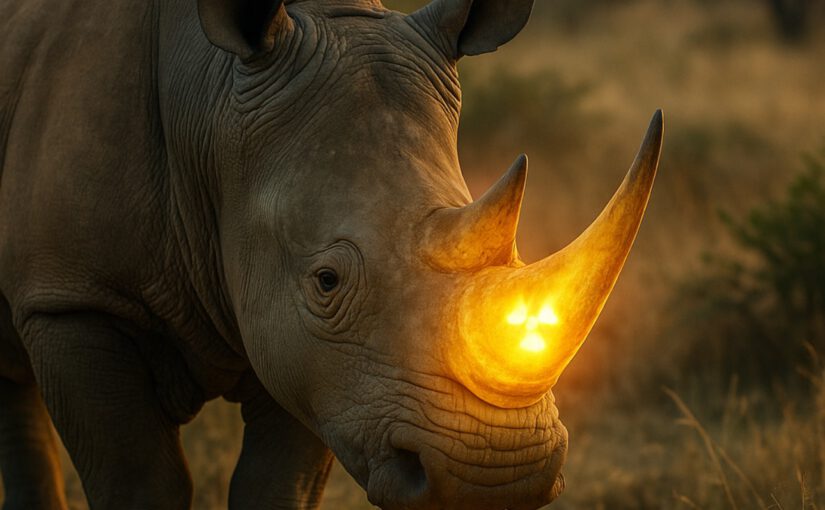This project offers brand-new opportunities for both animals and even poachers. Here’s why.
By
Werner Hoffmann –

Democracy of the Center, because education is better than extermination
The hunting of rhinos and elephants solely for their horns is one of the most brutal chapters in modern poaching. Until now, protective measures have been important but often not effective enough to stop the ruthless networks. That is about to change drastically – thanks to a groundbreaking scientific innovation that will pull the rug out from under poachers.
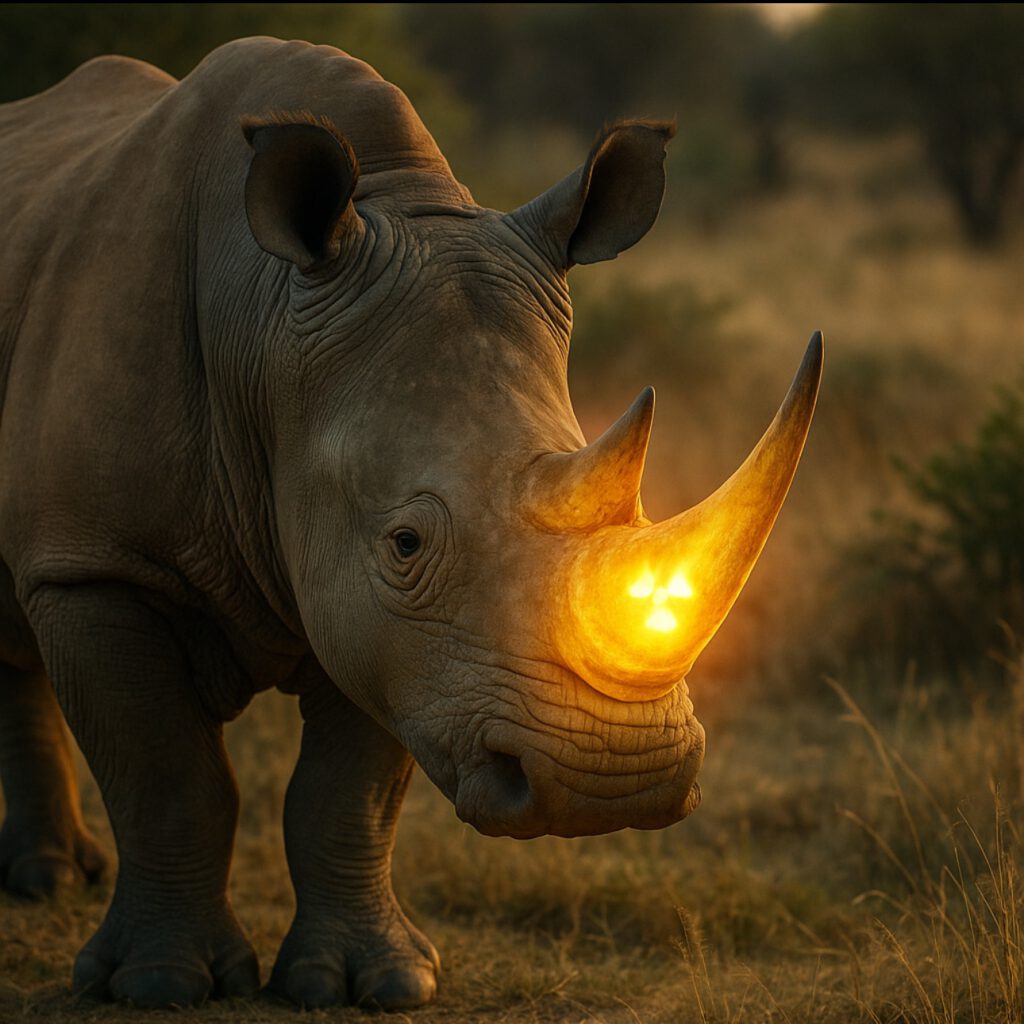
The Idea That Changes Everything
In South Africa, the Rhisotope Project is currently underway – a collaboration between the University of the Witwatersrand and international nuclear energy experts.
The concept is as brilliant as it is effective: tiny amounts of harmless radioactive isotopes are embedded into the horns of living rhinos.
These isotopes are completely harmless to the animals but reliably trigger radiation alarms at airports, seaports, and customs checkpoints. Poachers, smugglers, and traders will now face an unsolvable problem.
The End of the Black Market
Anyone attempting to transport a radioactively marked horn will be caught at the smallest routine check. Radiation detectors are deployed worldwide – at every major port and every airport cargo inspection. Even the most cleverly hidden shipments would be discovered instantly.
It gets even better: for the black market and its customers – especially manufacturers of so-called aphrodisiacs – the treated horns are worthless.
No buyer will touch a radioactive product, let alone process it. This makes killing a rhino for its horn virtually pointless.
Harmless for Animals – Deadly for Poachers’ Business
Blood tests and health checks of the first 20 treated rhinos show: the radioactive marking is entirely safe for the animals. There are no side effects, no restrictions on their quality of life. For poachers, however, it’s game over – the horns are forever unusable, and the profits vanish.
A Ripple Effect for Elephant Protection
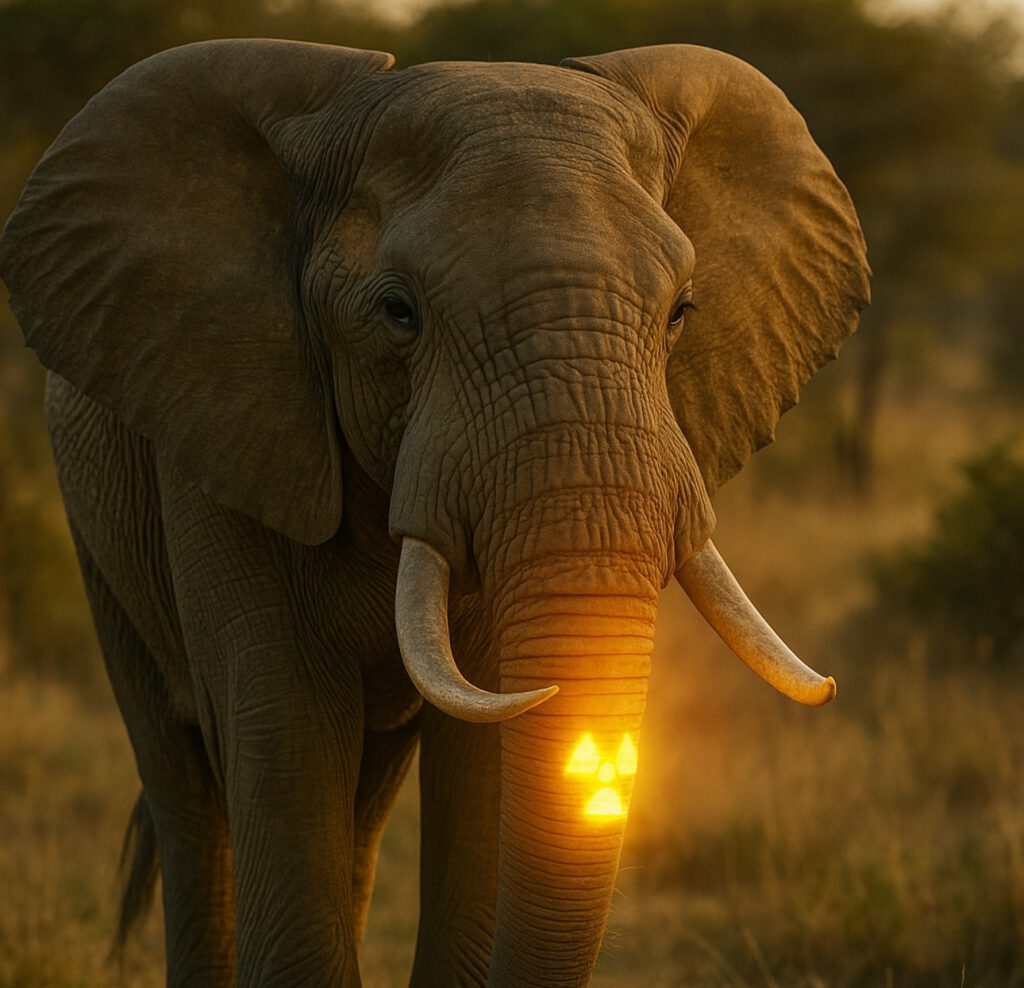
While the current project focuses on rhinos, experts are already thinking ahead. The technology could also be applied to ivory. If tusks were radioactively marked, the illegal ivory trade would collapse as well. This could mean the end of a bloody industry that has been decimating entire animal populations for decades.
A New Era in Wildlife Conservation
The message to poachers is clear: it’s no longer worth it.
Horns and tusks protected by this method bring no profit – but carry a huge risk of getting caught. Every shot, every kill would be for nothing. The combination of modern science and international law enforcement could, for the first time, break the cycle of greed, violence, and extinction.
The hope is that this innovation will be rolled out globally. We may soon witness what once seemed impossible: rhinos and elephants roaming the savanna without fear of a poacher’s rifle.
And for poachers? Welcome to irrelevance.
Hey Poachers: Time to Get a Real Job!

- Build solar power plants – you’ll generate electricity,
- you can earn real money long-term,
- your governments will likely support you.
For Former Poachers: The Future Could Be Solar – Photovoltaics in South Africa
Current status (2024):
- Installed capacity: around 8.4 GW of solar power,
- Share of total energy mix: about 8% of total electricity production,
Looking ahead:
- Target for 2030: 44% renewables (about 17,800 MW additional capacity),
A Vision for People and Wildlife

Imagine South Africa dotted with solar farms in the savanna.
Former poachers building solar installations in areas where the sun blazes and the land often dries out.

The effect:
- Cooler microclimates form beneath the solar panels,
- grass and shrubs can grow again,
- long-term job creation – from maintenance to further expansion.

A project for the future – for both people and animals.
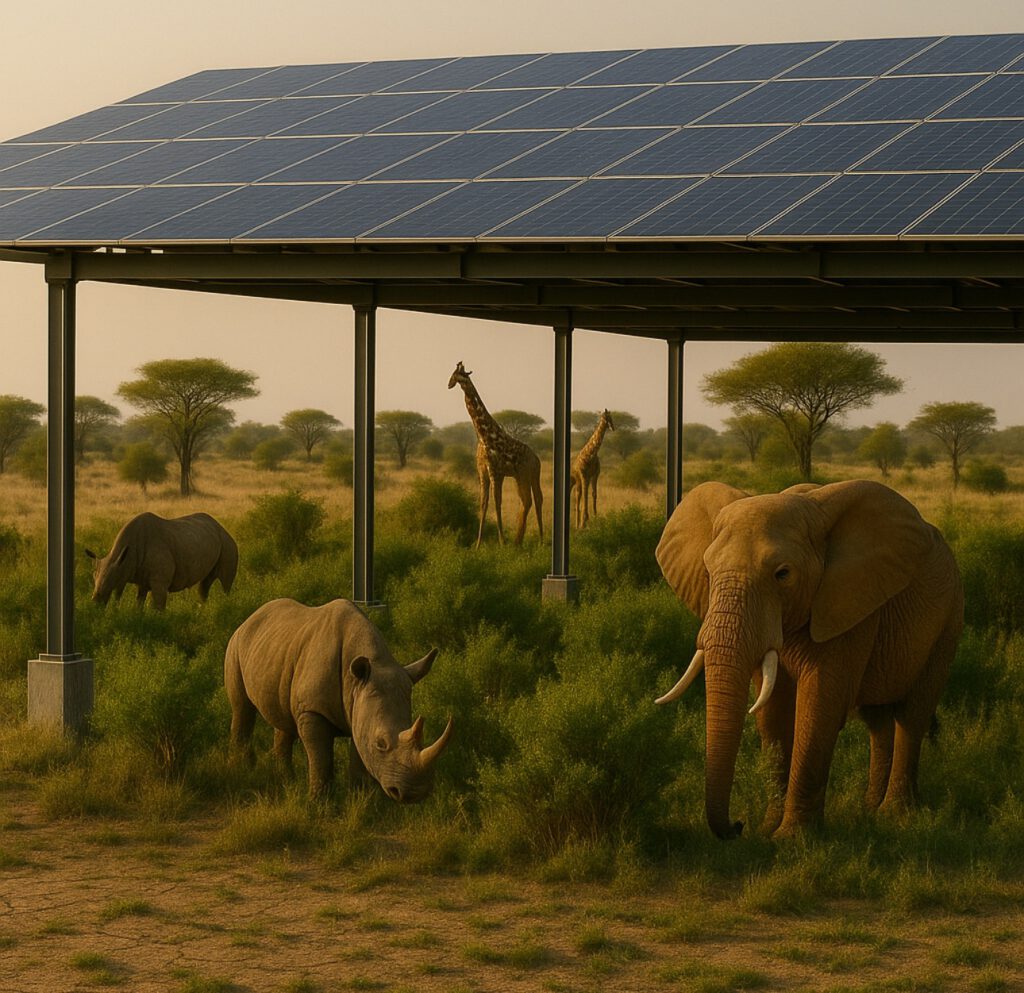
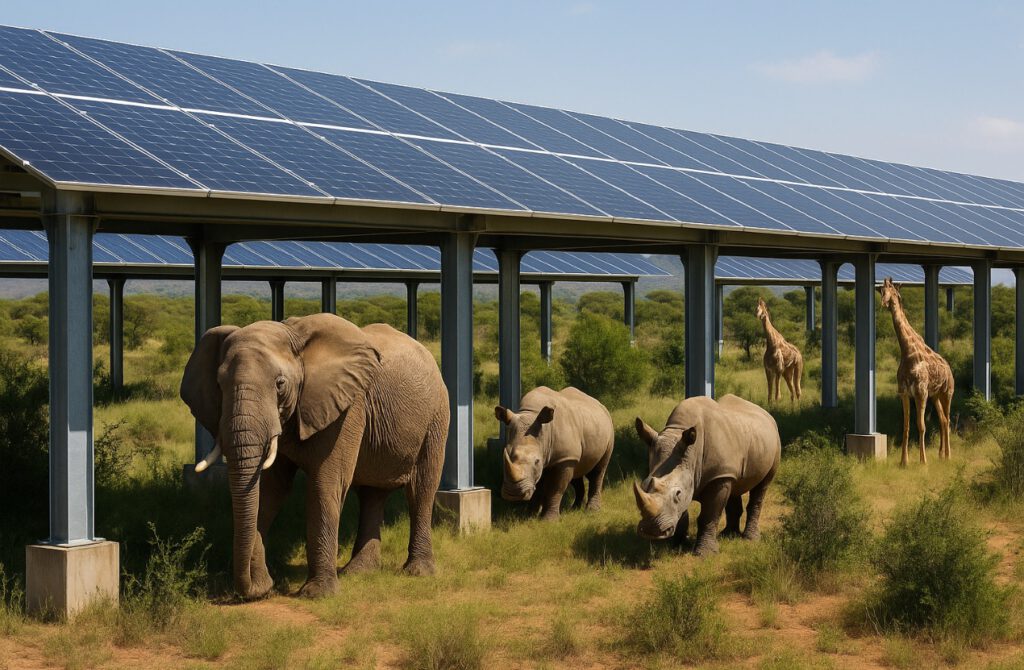
#WildlifeConservation #Rhino #Poaching #NatureProtection #Elephant #SolarPower #Jobs #SouthAfrica

